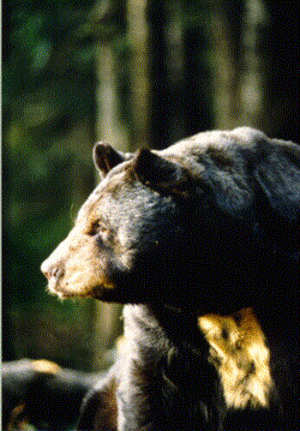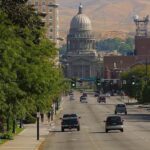Arkansas has a rich history which includes the states diverse and well populated wildlife. For many years, the state was nicknamed “The Bear State”. The reason was simple as the state was host to large numbers of native black bears. Some past evidence suggests that Arkansas might have had the largest population of these bears in the lower 48 states throughout the 1800’s and before. Early settlers and fur traders often reported that they had never seen or encountered as many bears in other locations except in Canada.
By the early 1900’s the native Arkansas black bears were almost completely gone due to over hunting and loss of their native habitat. During those years, thousands of acres of wilderness was being cleared for farm land and residential home sites. The bears were losing cover and feeding areas. This caused many problems as the search for food and refuge brought many conflicts between bears and people causing many fatal episodes. Bears gained such a bad reputation as being monsters that would destroy man made food sources, crops, and live stock that they were almost always shot on site.
Arkansas was mostly native wilderness until the late 1800’s and was known as an “out of the way land” at that time. However, as shipping increased on the Mississippi River that borders the eastern side of the state, towns and farms were springing up quickly along the river and throughout the delta land. There were many small towns accross the state at that time also, but most were considered remote and many of them being basically unknown about except by the folks that lived there. The large population of bears became very in demand products and big business.
In that day, bear meat and bear oil was in high demand for its quality. In fact, in high society, they were considered luxury items. It was found that the Arkansas bear oil was of a higher quality than most bear oil from other locations as the Arkansas bears had unlimited amounts of wild grapes and fruits to feed on. This in turn produced oil which was much sweeter than that rendered from other locations. Shipping barges on the Mississippi often carried hundreds of barrels or bear oil to New Orleans each month. Bear Oil was also shipped to many east coast cities up and down the eastern seaboard as well as being shipped to Europe. The small town of “Oil Trough” was named due to the many wooden troughs that bear oil was prepared and stored in until shipping. Since bear oil would not go rancid as lard and other animal oil would do, it had a much longer shelf life and demand. Business was booming in Arkansas for bear products and the land was over run with imported trappers and hunters and over the last half of the 1800’s, the bears lost their battle to survive in the growing state as they had done for many years before.
Around 1920, the state conservation department put a ban on bear hunting as there were only a handful of these native creatures left and it was very rare when one was sighted. Finally, in 1949 a plan was organized by the conservation department to re-introduce the black bears back into the state in certain wilderness areas and protected lands. This plan went into action starting in 1959 and continued to 1967. The department traded Arkansas wild turkeys for around 250 black bears from Canada and Minnisota and released them in the state under protection. Many years of research and field studies have paid off well for the bears and for the state as the bear population has now grown to over 3500 bears state wide and they are consistantly thriving. The re-introduction of black bears to the state is one of the most successful large carnivore re-introductions in American wildlife history!
With the success of the black bears return, the state opened up a limited black bear hunting season which started in 1980 in select areas of the state. Over the past 25 years since 1980, the bear hunting season has spread to nearly the whole state with yearly bear kill quotas being around 400 total state wide. The bear hunting is very good once again and managed very closely by the state game and fish department. Ethical hunters are also due much credit for their part in bear managment and reporting bear information such as sighting locations, movement, ageing, and feeding patterns as well as promoting the growth of bear habitat. The areas of the state containing the largest populations of bears are the “OZARKS” and “OUACHITAS” with the top concentration being reported in the “WHITE RIVER NATIONAL WILDLIFE REFUGE”. These areas contain much undisturbed wildness lands and lend several million acres of natural habitat to the bears.
As an Arkansas resident of most of my life, I am very happy that the bears are back in the state and doing well. Not only is it great to get to hunt them, but also to enjoy photographing and simply seeing them roaming free in their natural state of Arkansas.
Reference:
- Arkansas fish and game department Black Bears of Arkansas Bear hunting rules and regulations of Arkansas








